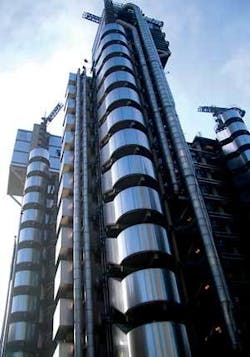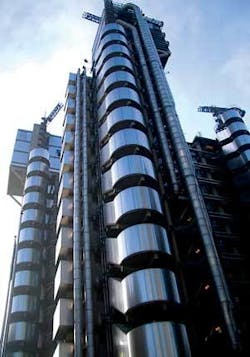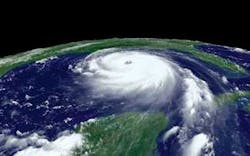ENERGY INSURANCE
By now, we’ve all heard that Lloyd’s of London recorded a substantial loss in 2005 ($176.8 million) mainly due to hurricanes in the US ($5.68 billion) and premiums are increasing while coverages are decreasing. While there is no doubt this is true and times are difficult for underwriters and insureds, oil and gas companies must focus on solutions to the following challenges: What is my insurance purchasing strategy? Does it make the most economical sense given the parallel rise of oil and gas prices and insurance premiums?
M. Adam Hall, EnRisk, Fort Worth
Simply renewing your expiring coverages at the same limits, deductibles, and coverages (provided they are available) may not be the best solution. Given today’s insurance market conditions, you are forced to consider to a fuller extent the shareholder makeup, how you’ve addressed asset concentration, what drives your cash flows, your agreed upon contractual liabilities, potential bottlenecks, and many other factors to ensure your insurance dollars are spent as economically as possible. Without a doubt, this will change every year for most oil and gas companies.
Market condition
The recent loss effects have shifted your insurance buying decisions for a period to come. Before we discuss ideas on how to approach the insurance market for your renewals, let’s look at its current condition. Lloyd’s traditionally sets the tone for the overall energy insurance market. Whether you are insured directly with a London market or a domestic market that reinsures through a London facility; chances are that a portion of your premium dollars end up in Lloyd’s.
Photo courtesy of FreeDigitalPhotos.net
Despite Lloyd’s large net loss in 2005, the capacity set for 2006 increased to $25.41 billion (up approx. 7%). This is not uncommon after suffering severe losses because investing members, syndicates, and corporate capital providers realize rate increases will follow. These rate increases are imminent for those with operations in loss-affected areas; some as high as 400%.
Domestic markets are being pushed to follow suit, but we have not seen these carriers react as drastically yet. Reasons for this difference in reaction between the London market and domestic market vary, but it is mainly due to domestic carriers limiting their exposure in any one area while Lloyd’s insurance and reinsurance companies typically take on the bulk or overflow of the unprotected risks.
From a coverage standpoint, we are facing a changing market in 2006. Several coverages have been diluted or completely removed for the foreseeable future. For instance, the leading energy underwriters in Lloyd’s have made it known that no named windstorm coverage will be available after July 1 through the end of the season. This leaves many GOM operators and those with inland water exposures scrambling for protection sooner to make sure they get their limits in place before capacity is no longer available.
Source: NOAA Satellite and Information Service
Another coverage that is dramatically limited in loss-affected areas and heavily diluted in all other areas is Loss of Production Income (LOPI). Underwriters continue to pay ever-increasing LOPI claims from the 2004 and 2005 hurricanes. The reason for the drastic change is that underwriters realized the difficulties associated with rating this coverage properly.
The future of the insurance market is uncertain, but certainty can be managed by fully evaluating your risk and how it fits in today’s market.
What to do
Approaching the energy insurance market today takes more than close relationships and experience; it takes creativity and salesmanship to make an underwriter(s) comfortable with those unique exposures associated with the oil and gas industry. So, given today’s energy insurance market, what steps should an oil and gas company take to manage its risk in the most economical fashion while maintaining peak operational readiness? 1) Review your risk, 2) Mitigate your risk, 3) Develop an insurance purchasing strategy for those risk you are unable to avoid or mitigate, and 4) Make your company an attractive risk to underwriters with great data and presentation.
Risk review - Going through the steps to identify, mitigate and then transfer risk must be performed on an annual basis (sometimes even more often). An oil and gas company’s asset base and risk tolerance change too often to allow an automatic placement of insurance coverages year after year. A risk review is a fairly simple process which clearly identifies those risks that require some level of protection and typically covered through commercially available insurance. It is often best to mitigate much of your risk through contracts, safety controls and HR procedures, but these risk mitigation and risk transfer mechanisms can only do so much.
Insurance purchasing strategy - Not all risks are insurable. And not all insurable risks should be insured. There is a point at which you reach diminishing value with premium dollars spent. You and your company should be looking for the optimal amount of coverage for the amount of premium that coincides with your current risk tolerance. This is a moving target for most oil and gas companies due to cyclical cash flows, oil and gas prices, and energy insurance market conditions.
In hard market conditions, an oil and gas company is more likely to self-insure certain risks or take much higher retentions as oil and gas prices remain high. Your cash flows are typically higher and these options make sense. Developing an insurance purchasing strategy includes determining your risk tolerance, evaluating cash flows, knowing the internal safety controls and procedures, understanding the insurance market conditions, and then purchasing the coverages and limits that make the most economical sense. Too many times companies simply purchase the “standard” limits and coverages because of ease, poor risk consultation, or lack of risk review.
An attractive buyer - You have reviewed your company’s risk tolerance and exposures and came up with those coverages and limits you need to secure. Now what? You and your broker/agent must determine how to tell your particular story to your underwriter(s). What is it about your company’s risk that makes an underwriter want to a) offer you some of their capacity, and b) be competitive when rating your risk? Creativity and imagination are two key elements.
A presentation to the underwriters should be well organized and differentiate your risk from “the others”. It is best to avoid non-pertinent information and clearly present the facts they need to properly rate the exposures which include detailed asset description, proper contract usage, active safety procedures, and any other important data. Also, work with your broker to try and avoid underwriters providing a quote; rather, let them accept or amend your offer. There is no hiding the fact that many energy companies’ net worth is higher than it was a few years back; therefore, underwriters realize you have more to protect. However, cash flows are greater and underwriters want to see you taking a bigger piece of the risk while they recover from the losses (approx. $12 billion on energy alone) from 2005 largely due to hurricanes and large international offshore claims.
You may be asking “What about previous claims that are on my record?” Claims are going to occur. The fewer claims you have on your record, the more attractive you are to an underwriter. But what’s done is done and you should focus on presenting those steps you have taken to prevent that same loss from recurring.
Underwriters have to play too
There is no question both the insurance and energy industry are becoming more educated about how the other side operates. If energy companies take on much larger deductibles, higher premiums and scaled-back coverages, then underwriters should play along as well. There needs to be balance since we all recognize the cyclical nature of these two industries. The challenge is that neither side wants to concede when considered to be in the “stronger” position. It is not likely to happen this time either. Underwriters want the insureds to understand their dilemma between collecting enough premium to help offset the 2005 loss while not over-committing in any one exposure group to avoid this situation again. They realize they are subject to the same kinds of losses in 2006 and cannot collect enough premium to make that a profitable undertaking.
Although we would all like to see more favorable terms, conditions, and rates in the insurance policies, oil and gas companies, specifically, must approach their renewals this year very carefully to maximize the value on their premium dollars. There is more capacity in the insurance market due to increased rates, but coverages are scaled back. Long time relationships are being put to the test. Underwriters are sticking to their guns and working hard to figure out how to avoid another loss of similar magnitude experienced in 2005. Oil and gas companies are working closer with their brokers/agents to create their approach into the insurance marketplace. Insurance has always been a vital ally to the energy industry and a well thought-out (and executed) renewal process in 2006 can see you through these hard market times.
About the author
Adam Hall [[email protected]] joined EnRisk in April 2003 as an energy risk specialist. He is focused on producing and servicing oil and gas operators and non-operators with an emphasis on the coordination of insurance and indemnity obligations in the overall risk management process. He received his BBA from the University of Phoenix. Prior to joining EnRisk, he worked in the technical and engineering department of a major telecommunications company.



